Apple's iPhone 4: Thoroughly Reviewed
by Brian Klug & Anand Lal Shimpi on June 30, 2010 4:06 AM EST- Posted in
- Smartphones
- Apple
- iPhone 4
- Gadgets
- Mobile
Camera Usability
It still takes almost two seconds to activate the camera on the 4, which is enough time to miss whatever it is you’re trying to grab a photo of. Thanks to the iOS 4 update however, the shutter is almost instantaneous. The difference appears to be that the photo is committed to memory but not fully written to NAND, whereas before the photo would be written to the Flash before you could take another picture. Power loss in the middle of snapping photos seems pretty rare on a smartphone so the tradeoff, if I’m correct, makes sense.
Apple opted for a lower noise rather than higher resolution sensor in the iPhone 4 and it did pay off. The main camera shoots photos at 2592 x 1936 compared to the EVO 4G’s 3264 x 1952, but the resulting images are far less noisy - particularly in low light situations:
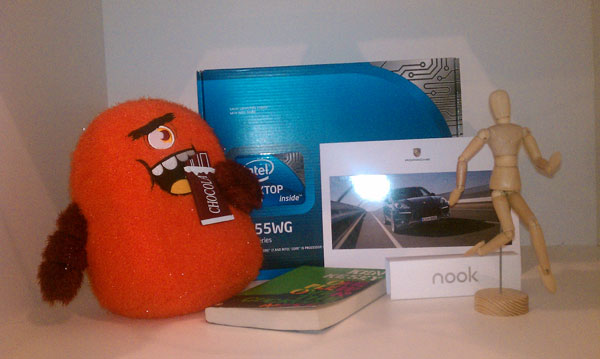
HTC EVO 4G - Low Light
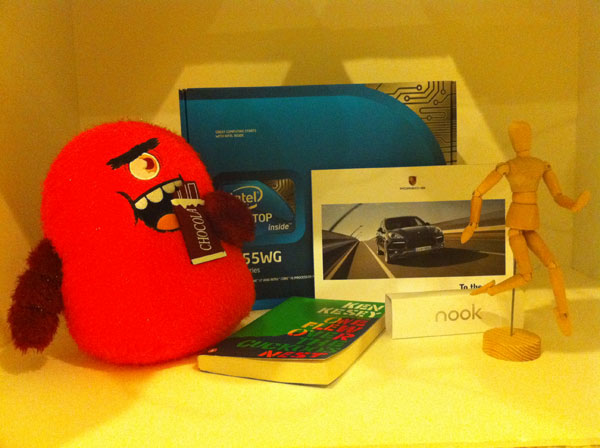
Apple iPhone 4 - Low Light
The 4’s main camera, like the HTC Incredible and EVO 4G, is a decent replacement for a point and shoot if you’re primarily outdoors. You’re still going to get better image quality out of a good point and shoot, but the tradeoff is convenience. The limitations are significant.
Because you rely on the iPhone 4’s software controlled aperture and shutter speed you don’t have the ability to properly expose the image. You have to rely on Apple’s algorithms, which tend to either overexpose outdoors or miscalculate white balance with non-halogen light sources.
This is an example of a photo taken outdoors that’s more washed out than it needs to be:

And many of you picked up on the white balance issue I snuck into our EVO 4G review yesterday:
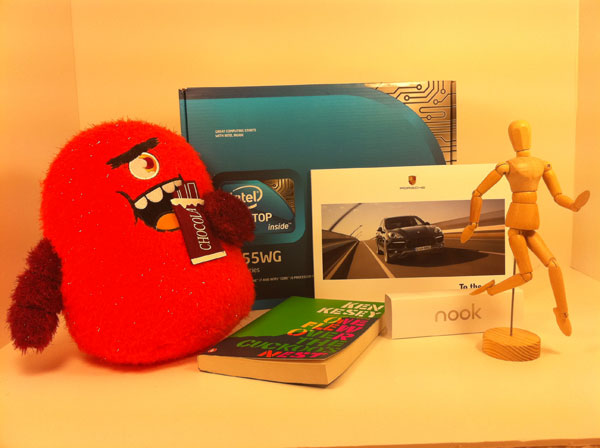
Regardless of where I tapped to focus, I could not get the iPhone 4 to set a proper white balance in our photo box.
While I was watching the screen, the iPhone 4 would alternate between yellow and white for the background color. It seemed to be trying to calculate the white point but was just being thrown off by the type of light. If I timed the shot right I could snag the photo while the iPhone was switching between white balance points:

I also had this problem in my office which uses LED can lights.

This is far more yellow than it should be
While Brian didn't have the same problems I did, Brandon Hill (DailyTech Editor in Chief) did. It seems to be very dependent on the type of lighting you have and even then it seems to vary based on the type of CFLs. And unlike the EVO 4G, there’s no way to manually set a white balance on the 4.
For overall image quality though I have to hand it to Apple, the iPhone 4 does do a better job than the EVO 4G or other phones I’ve used. Take a look at this shot inside my house:
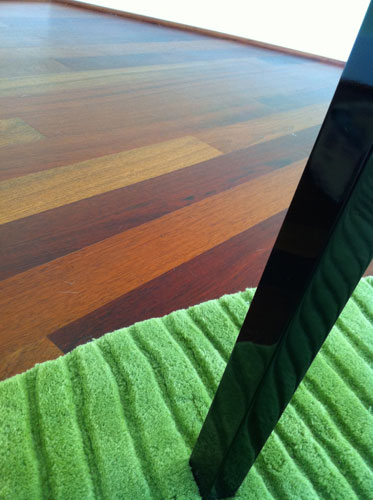
The colors in the iPhone 4 shot are on point. The green is correct, the wooden floor is right and the black is, well, black. The EVO 4G didn’t do so well on this test by comparison:
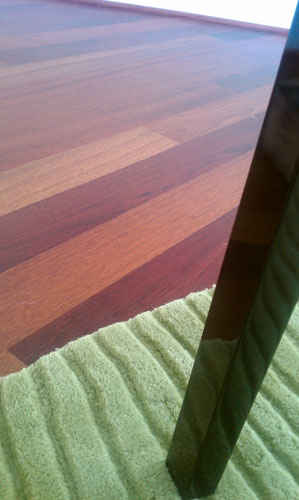
The 4’s camera isn’t perfect, but it does appear to handle colors better than the EVO (with the exception of my white balance issue) and delivers lower noise photos.
Compared to other phones the 4 does similarly well, besting the 5 megapixel camera in the Motorola Droid easily in terms of color reproduction and sharpness. Though the HTC Incredible previously was a top performer alongside the N900, the iPhone 4 makes the Incredible look a bit oversharpened and artificial. Compared to the 3GS, the iPhone 4's improvement is obviously dramatic, as shown in the gallery below.
Video is recorded at 1280x720, in H.264 with AAC mono audio. We measured a bitrate of 1.35 MBps, outclassing all the other smartphones we've tested.
iPhone 4
HTC Droid Incredible
Motorola Droid
Nokia N900
What's interesting is that the iPhone 4 appears to crop the sensor down for video recording, taking the center most 1280x720 pixels instead of scaling down the entire image size. The result is that the focal length for video recording is notably longer than when taking photos.
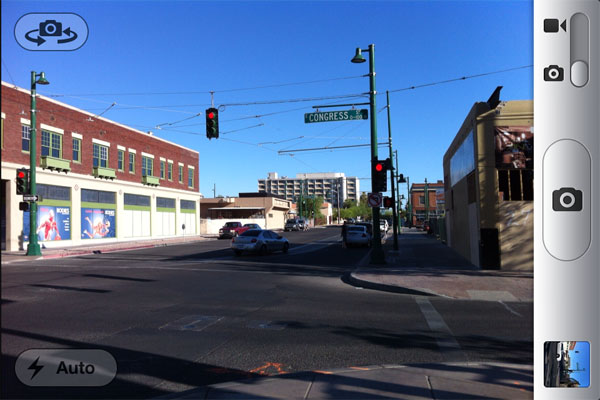
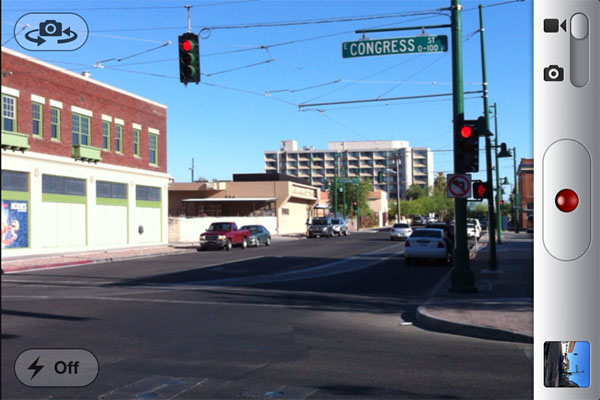
You can see the difference is quite notable standing in the same place. Perhaps the A4 SoC lacks the compute power to apply a scale and encode at the same time, necessitating this crop. Whatever the case, video shot with the iPhone 4 still looks very good at the promised and delivered 30 FPS. Move the camera around enough, and there's still screen door effect from the rolling shutter like any CMOS sensor is going to give you - it's a fundamental problem no phones are going to get around soon. Its also right there in the specifications page for the camera SoC; rolling shutter.
Similarly, iPhone 4 does give you 5x digital zoom, though we still maintain you're better off taking photos at native resolution and messing with them later with better interpolation algorithms.
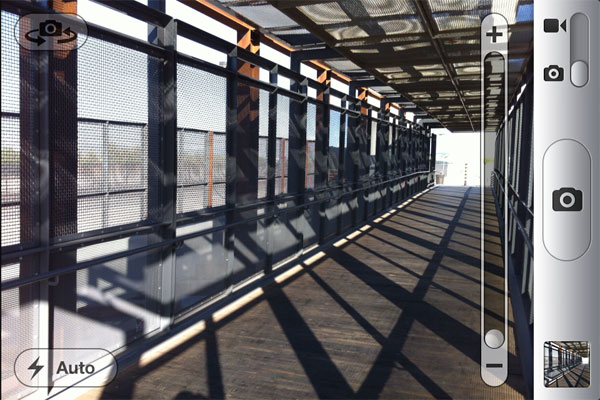
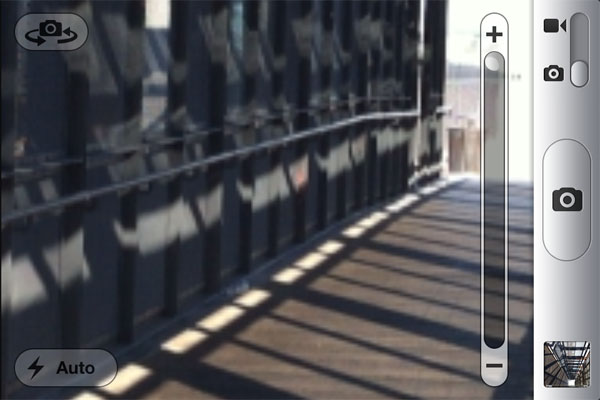






















270 Comments
View All Comments
Mike Wadner - Saturday, July 3, 2010 - link
Well then you're in pretty bad shape. Anyone who considers Microsoft not far behind Apple has their head up their F**KING ass. May be a nice review but I have doubts about their overall knowledge of whats going on out there.websitetrafficchecker - Wednesday, February 5, 2020 - link
If you want to check website traffic for free, visit https://seowebsitetraffic.net/check-website-traffi...jorpoka - Wednesday, June 30, 2010 - link
People seem to making a big deal about the increased ram in iPhone 4, but I think it was almost required.The graphics chip shares memory with the system (just like in previous models) so you have to consider the fact that the screen resolution has increased by 4. How is the system going to deal with the higher resolution grahpics... the 512 MB of ram.
For now not every application on app store uses the updated resolution, but as more and more apps are updated for iOS 4 and the retina display i think the additional 256 MB ram benefit will decrease.
solipsism - Wednesday, June 30, 2010 - link
The surprise wasn't that 512MB wasn't deemed needed, it was simply unexpected after the iPad with a higher resolution, faster processor and generally higher chance for more complex apps to run on the 8x larger display only being shipped with 256MB, like the 3GS, when 512MB was expected. On other words, if the iPad didn't get 512MB RAM, few expected the iPhone 4 being shipped just a couple month later to get it.John Sawyer - Thursday, July 1, 2010 - link
Not higher resolution on the iPad, but more pixels (but we get your meaning).Snotling - Thursday, July 1, 2010 - link
that's the point I'm trying to make since the iPad's release... it was not a planned product, it was ruched out just so they would not be assassinated by the press and the fanatics, my full conspiracy theory is on my blog:http://cyberpeste.blogspot.com/2010/01/letter-to-s...
Now with the iPhone 4, we see what Apple was actually working on before rushing out the iPad and its a very good product. superior in every way to the iPad.
tkoyah - Sunday, July 4, 2010 - link
Um, the iPad wasn't rushed. The iPad project actually pre-dated that of the iPhone. But when it became aparent that this would be the perfect interface for a Phone, the iPhone project began, and was given a higher priority.I expect this first iPad wasn't given more RAM: a) to keep the price-point under $500 b) because there was no pre-existing iPad software, so having less memory available wouldn't break any apps.
tipoo - Wednesday, June 30, 2010 - link
The big deal is that the iPad, their tablet, has half the RAM of the phone they released shortly after. With a bigger screen and more pixels, people naturally would have expected the iPad to have the technological edge, but with only half the RAM of the iPhone that is not the case.AMDJunkie - Wednesday, June 30, 2010 - link
Begins after this post.Zokudu - Wednesday, June 30, 2010 - link
Wonderfully written article I love this line of high end smartphone articles you guys have been releasing. I love the quality of the writing at Anandtech.Just a few questions I have.
Doesn't AT&T have a 5 year exclusivity deal for the iPhone meaning they would still have around 2 years remaining before an opposing carrier could offer the device?
Also several of my friends with iPhones both 3G and 3GS constantly complained about AT&Ts coverage within New York and blamed the carrier. However several of them have gotten iPhone 4's and are reported fewer dropped calls if any at all. I have been using a Blackberry on AT&T's network for several years now and have had no issues with their coverage. Do you feel the dropped calls within hot spots such as New York should be blamed on the iPhone itself or the network?
Also where do you feel that Windows Phone 7 fits into the future of smartphones. Do you envision it taking center stage against both iOS4 and Android or falling to the wayside such as webOS ended up doing?
Once again thank you for the wonderful read and keep up the quality work.